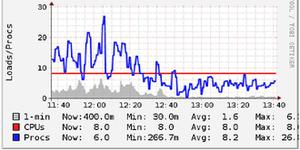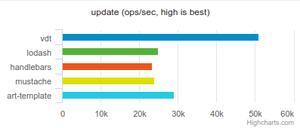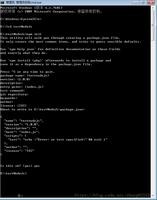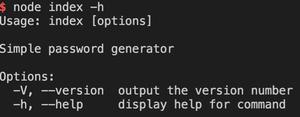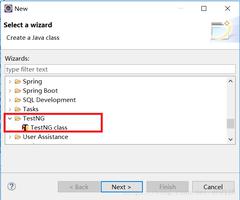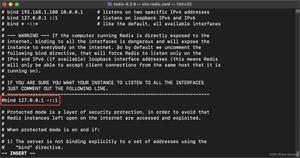使用Node.js实时读取文件
我需要找到一种最佳方法,即使用node.js实时读取正在写入文件的数据。麻烦的是,Node是一艘飞速前进的船,这使得很难找到解决问题的最佳方法。
有一个Java进程正在执行某项操作,然后将其执行的结果写入文本文件。运行通常需要5分钟到5个小时的时间,整个时间都会写入数据,并且可以达到相当高的吞吐率(大约1000行/秒)。
我想实时读取此文件,然后使用节点聚合数据并将其写入套接字,以便在客户端上以图形方式显示。
客户端,图形,套接字和聚合逻辑都已完成,但是我对读取文件的最佳方法感到困惑。
FIFO
-我可以告诉我的Java进程写入fifo并使用节点读取此内容,实际上这是我们目前使用Perl时遇到的问题,但是因为其他所有操作都在节点中运行移植代码很有意义。
Unix Sockets - 如上。
fs.watchFile -可以满足我们的需求吗?
fs.createReadStream -这比watchFile好吗?
fs&tail -f-好像是hack。
要使用Unix套接字的问题,这似乎是最快的选择。但是,节点是否具有更好的内置功能可实时从fs读取文件?
回答:
如果您希望将文件作为数据的永久存储,以防止系统崩溃或正在运行的进程网络中的某个成员死亡,则流丢失,您仍然可以继续写入文件并读取从中。
如果您不需要此文件作为Java流程产生的结果的持久存储,那么使用Unix套接字在简便性和性能上要好得多。
fs.watchFile() 并不是您所需要的,因为它在文件系统报告文件时就可以处理文件统计信息,并且由于您要读取已写入的文件,因此这不是您想要的。
很遗憾地意识到,尽管我fs.watchFile()在上一段中指责过使用文件统计信息,但我自己在下面的示例代码中做了同样的事情!尽管我已经警告过读者“保重!”
因为我在短短几分钟内就写了它,甚至还没有很好的测试;仍然可以通过使用fs.watch()代替,watchFile或者fstatSync如果基础系统支持它,则可以做得更好。
为了读取/写入文件,我在下面写了些有趣的文章:
:[由于在Java进程中写入文件,因此您将不需要此文件]
var fs = require('fs'), lineno=0;
var stream = fs.createWriteStream('test-read-write.txt', {flags:'a'});
stream.on('open', function() {
console.log('Stream opened, will start writing in 2 secs');
setInterval(function() { stream.write((++lineno)+' oi!\n'); }, 2000);
});
:[请注意,这只是演示,请检查err对象!]
var fs = require('fs'), bite_size = 256,
readbytes = 0,
file;
fs.open('test-read-write.txt', 'r', function(err, fd) { file = fd; readsome(); });
function readsome() {
var stats = fs.fstatSync(file); // yes sometimes async does not make sense!
if(stats.size<readbytes+1) {
console.log('Hehe I am much faster than your writer..! I will sleep for a while, I deserve it!');
setTimeout(readsome, 3000);
}
else {
fs.read(file, new Buffer(bite_size), 0, bite_size, readbytes, processsome);
}
}
function processsome(err, bytecount, buff) {
console.log('Read', bytecount, 'and will process it now.');
// Here we will process our incoming data:
// Do whatever you need. Just be careful about not using beyond the bytecount in buff.
console.log(buff.toString('utf-8', 0, bytecount));
// So we continue reading from where we left:
readbytes+=bytecount;
process.nextTick(readsome);
}
您可以放心地避免使用nextTick,readsome()而是直接致电。由于我们仍在此处进行同步,因此从任何意义上讲都是没有必要的。我喜欢 :p
以上面的示例为例,但将其扩展为读取CSV数据可得到:
var lastLineFeed, lineArray;
function processsome(err, bytecount, buff) {
lastLineFeed = buff.toString('utf-8', 0, bytecount).lastIndexOf('\n');
if(lastLineFeed > -1){
// Split the buffer by line
lineArray = buff.toString('utf-8', 0, bytecount).slice(0,lastLineFeed).split('\n');
// Then split each line by comma
for(i=0;i<lineArray.length;i++){
// Add read rows to an array for use elsewhere
valueArray.push(lineArray[i].split(','));
}
// Set a new position to read from
readbytes+=lastLineFeed+1;
} else {
// No complete lines were read
readbytes+=bytecount;
}
process.nextTick(readFile);
}
以上是 使用Node.js实时读取文件 的全部内容, 来源链接: utcz.com/qa/406924.html

